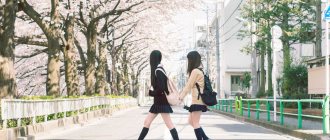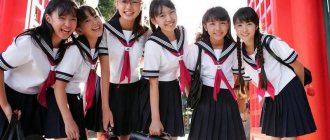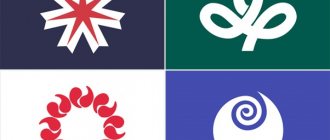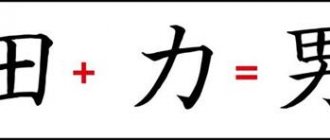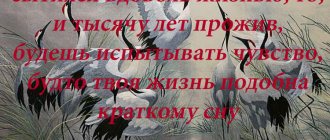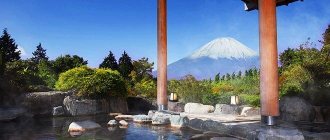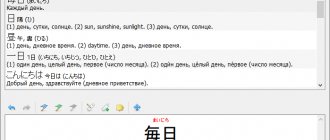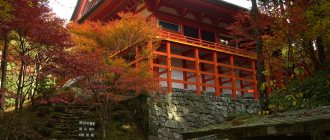We make the process of applying for a student visa and Japanese language school much easier, but there are still some basics that it's best to be aware of. Learn how Japanese language schools work, what you'll learn at them, and how schools can help you achieve your language learning goals. Here are the 10 most frequently asked questions about how Japanese language schools work!
What is the difference between high and low intensity Japanese language schools?
There are many language schools offering high-medium or low-intensity courses. At a high-intensity school, you will attend classes, do a lot of homework , and do a lot of self-study, and during the first three months such schools do not recommend, and in some cases do not even allow, students to have a part-time job. In a low-intensity school, the class load will be about the same, but there will not be as much homework and less independent study time will be required to keep up with the class curriculum and pass the course.
Study methods
There are many methods to help you learn Japanese from scratch. They can be divided into two groups:
- independent development;
- training with a teacher.
To learn Japanese from scratch yourself, you should consider the following methods:
- Textbooks. There is a variety of literature, books, and manuals on the Internet - in English and in Russian. They should be selected according to their level of knowledge. If you can use textbooks in English, then in terms of the relevance of the variety of methods, you should give preference to them.
- Applications on a smartphone. There are many programs: some are aimed at training grammar, others at memorizing words and hieroglyphs, and others at understanding spoken Japanese speech. As with textbooks, the choice of tasks by level is important here.
- This also includes dictionaries: Lingvo, EJLookup, Yarksi. You also need to learn how to use translation services correctly and quickly.
- Watching cartoons and videos in the target language. Japanese cartoons for children are useful for beginners. They clearly explain simple rules and teach new words: names of flowers, animals, family members. If your level of English or Japanese allows you, then you can watch educational videos from native speakers, where they explain grammar and how to use it. Plus this is a good opportunity to listen to Japanese speech.
- Communication applications. When you have mastered the basics and the initial level, you can try to communicate with native speakers. There are special programs for this. In them you select the desired settings, the interlocutor and carry out correspondence based on interests. Japanese people find it difficult to communicate with foreigners who do not know Japanese. Therefore, the advantage of such applications is that the interlocutor is already mentally prepared for mistakes in your speech and is ready for dialogue. The programs are constantly updated, adding translations of sentences and the ability to correct errors in partner messages, which makes communication easy and comfortable.
If you understand that you cannot cope with the study yourself and you need the help of a professional, then there are also several options:
- Language school. Teachers conduct Japanese language lessons for beginners from scratch; they teach according to the program, explain grammar clearly, and give new words and hieroglyphs to memorize. Many schools offer special courses to prepare for the international Japanese language proficiency test, Nihongo Noreku Shiken, or JLPT. Therefore, if your goal is to obtain a certificate, you should choose these courses. All training will be aimed at analyzing and remembering information relevant to the selected exam level. It’s a plus for the school to have native speakers on staff. This will allow you to listen to speech, correct pronunciation of sounds, and learn interesting things about the country itself and culture.
List of the best Japanese language courses:
- Language schools online. They will be convenient for those who do not want to waste time on the road or who simply cannot study in a regular school. However, in this case, you have a considerable responsibility: do your homework, the teacher’s recommendations, and write down hieroglyphs. Not everything can be checked online. But if you have enough self-discipline, then this is a good option to learn Japanese from scratch at home.
You can choose any convenient method. The main thing is to select everything according to your level of knowledge and devote at least an hour a day to it.
How to successfully pass the required tests?
All schools have regular tests throughout the term, and at the end of each term (usually around three or six months) there is also a large level test to test your knowledge of the language and allow you to progress to the next level if you pass it successfully. . To take the proficiency test, you will need to ensure that you are able to complete class assignments, homework assignments, and any additional independent assignments recommended by your school.
How to learn kanji
Start studying
The first thing you need to do to start learning kanji is to find a study guide. This could be a website, an application, or a special table with information about hieroglyphs. The best guide for Russian-speaking audiences is the website (and at the same time web application) akanji.ru. More will be said about him below.
Unfortunately, the site akanji.ru currently does not have an adapted mobile version, but if you are on a computer, then this will be the best choice (its advantages compared to other sites are described below).
What to learn in Kanji
Many characters have several on'yomi or kun'yomi - in this case, you need to learn them all, at least if they are not rare. On the website akanji.ru, all readings that are not highlighted in gray are not considered rare, so you need to learn them all. You need to learn both onyomi and kunyomi, don't try to learn just one of them.
What is the difference between JLPT and J-test?
The JLPT or Nihongo Noryoku Shiken is a standardized exam for Japanese language learners that is widely accepted throughout the world. The test has been around since 1984 and tests vocabulary, grammar, reading and listening comprehension. If you are in Japan, there are two opportunities to take the exam each year - in July and December. If you take the test in another country, the exam may only take place once a year.
J Test , or Practical Japanese Language Test, began to be administered in 1991. It is divided into beginner, intermediate and advanced levels. Reading, listening comprehension, writing and vocabulary are tested. The exam can be taken in Japan six times a year for intermediate and advanced levels and three times a year for beginner levels. This test is not administered globally —besides Japan, you can only take it in certain regions of Asia and Brazil.
Japanese language. Learning Japanese characters. Japanese writing
Today we will look at 3 simple but interesting hieroglyphs, which include the same element.
So, the first character is the character 木/き/ki, which means “tree” and, thanks to this picture, it can be easily remembered.
Now, let's see how it is written. First we draw a horizontal line, from left to right. The second line goes from top to bottom, then we write the third and fourth lines. Ready!
Now let’s look at what readings this hieroglyph has and in what words it is written.
So, this character has Chinese and Japanese readings. ボク/boku and モク/moku are Chinese readings, and き/ki and こ/ko are Japanese readings.
The next character is the character 林/はやし/hayashi, which means “forest, grove.”
Let's see how this hieroglyph is written.
And it is written in the same order as the hieroglyph 木/き/ki, just another hieroglyph 木/き/ki is added next to it and it turns out 林/はやし/hayashi - “forest, grove”.
So, this character has 2 readings - りん/rin (Chinese reading) and はやし/hayashi (Japanese reading). The meaning of the hieroglyph is “forest, grove.”
Let's see what words this hieroglyph is included in.
And there is one more character left, which includes the character 木/き/ki - “tree”. This is the hieroglyph 森/もり/mori, which also means “forest, grove.”
His spelling is as follows. First we write “top tree” in the same order as the character 木/き/ki. Then we write “tree” on the left and then “tree” on the right. Ready!
The Chinese reading for this character is しん/shin, and the Japanese reading is もり/mori. And it also means “forest, grove.”
Surely, you have a question: is there a difference between the hieroglyphs 林/はやし/hayashi and 森/もり/mori, because both words mean “forest, grove”. Yes, there is a difference between them.
Typically, the character 林/はやし/hayashi is used when trees are planted by humans, and 森/もり/mori is used when trees grow naturally.
That's the difference between them.
Be sure to watch the video to the end, listen to the song performed by Ilona Tilkina! It will help you remember these hieroglyphs even better!
Good luck in learning Japanese!
Source
Is studying Japanese in Japan the best way to master the language?
Yes! Nothing beats the opportunity to learn while living in a country where they speak the language you are learning. Studying at a Japanese language school in Japan involves complete immersion in the language, culture and society, giving you a more well-rounded experience that helps you better understand the cultural nuances of the language.
Study Japanese with Go! Go! Nihon selected textbooks
Learn more
For any questions about the student visa application process or which school to choose, contact Go! Go! Nihon today!
LiveInternetLiveInternet
unfortunately there is no clear answer
different sources give different answers
here are some of them
answer 1
From 50,000 to 85,000 hieroglyphs. https://yakusite.ru/Page3_2.html Many people who do not study Japanese are interested in this question. Even Japanese scholars have different figures on this matter. So, how many characters are there in Japanese? It is believed that there are about 50,000 characters in total. This figure dates back to the creation of the famous Chinese hieroglyphic dictionary “Kokijiten” in 1716, in which about 50,000 hieroglyphs were collected. In all Chinese and Japanese hieroglyphic dictionaries published later, this figure was repeated with slight variations. Thus, for the release in 1986 of the new edition of the Great Hieroglyphic Dictionary “Daikanwajiten”, the publishing house “Daisyukan” prepared a poster with the title “Here they are - 50 thousand”, on which one could take a look at this whole sea of hieroglyphs at one glance. So it was customary to believe that there are about fifty thousand hieroglyphs in the Chinese and Japanese languages. However, in 1994, the monster dictionary “Chukajikai” was published in China, which contained over 85,000 characters. Compared to previous large hieroglyphic dictionaries, divided into more than a dozen volumes, here all the hieroglyphs are collected in one volume of 1800 pages, and each page is similar to a hieroglyphic table. Articles devoted to a single hieroglyph take up no more than one or two lines. There is not a single difficult word here, but instead on each page there is a search list consisting of an average of 50 hieroglyphs. This dictionary completely refuted the established figure. The publication of the Tyukajikai dictionary was made possible thanks to the progress of computer technology. Previously, in order to publish such a publication, it was necessary to create more than eighty-five thousand types of various printed forms of characters. Now, thanks to the computer, this task has been significantly simplified, and increasing the number of characters existing in the form of databases is not difficult. In total, today there are more than 200,000 hieroglyphs. This figure is apparently close to the real one, if we consider different hieroglyphs that differ very slightly in shape from each other. In fact, if we take the semantic differences as a basis, then their number will be no more than 15,000. It is this figure that most likely reflects the actual number of hieroglyphs in the literal sense of the word. Next comes the sacramental question: “Do you need to know all these 15,000 hieroglyphs?” Nothing like this. The average educated Japanese actively knows about 2000 hieroglyphs, maximum 3000, and a hieroglyph specialist knows about 6000. So there is no need to be afraid of these terrible numbers.
answer 2
Each hieroglyph is not just a set of features, but a whole image, once you recognize it you can easily remember the meaning of the hieroglyph. For example, the hieroglyph with the meaning “rest” 休 is depicted using the figure of a man sitting under a tree, such a wonderful image. The hieroglyphs were borrowed by the Japanese from the Chinese along with their readings, but adapted to the peculiarities of the Japanese language: that is, they began to denote not only borrowed Chinese roots, but also the roots of Japanese words. Therefore, hieroglyphs in Japanese usually have at least two readings - Japanese and Chinese. More details about when Japanese reading of a hieroglyph is used, and when Chinese reading is used, as well as more details about the origin of hieroglyphs are described in my newsletter (you can subscribe to it by filling out the form “Get a free video lesson on the Japanese language”). The total number of characters in Japanese and Chinese is estimated differently. The largest printed dictionary of Chinese characters, Zhonghua Zihai, published in 1994, includes 85,568 characters. However, if you exclude from it different spellings of the same sign, then the number of hieroglyphs in it will be less. The largest Japanese dictionary of characters, Daikanwa Jiten, contains about 50,000 characters. Unicode tables include a total of 7,000 characters. But for practical purposes, modern Japanese uses a little more than 3,000 characters. And 1945 hieroglyphs are approved as necessary for everyday use. Every Japanese high school graduate should know these almost two thousand characters. In addition, there is a list of jinmeiyo-kanji ("characters used in names"), which lists the kanji that are acceptable for use in first and last names. It has 861 characters. The texts may also contain signs that are not included in these lists, but there are quite a few of them.
Wikipidia's answer
The total number of kanji in existence is difficult to determine. The Daikanwa Jiten dictionary contains about 50 thousand characters, while more complete and modern Chinese dictionaries contain more than 80 thousand characters, many of which are unusual forms. Most of them are not used in either Japan or China. In order to understand most Japanese texts, knowledge of about 3 thousand kanji is enough.
Use a large dictionary, book or online resource
Whenever you learn a new kanji, check it in your dictionary and see what words it means. This will help you understand the meaning and see how to use it. Most kanji teaching materials offer several common lexical meanings for each kanji. A free online resource for most Japanese learners is WWWJDIC by Jim Breen. Another great resource is Kanji Damage: a very practical and context-oriented online kanji book. Contains about 1700 kanji.
Japanese students learn kanji in a set order. There is a set of kanji for each grade, and so on from first year until the end of high school. There is a reason why the Japanese education system teaches kanji in this order, but it probably won't suit you as a foreigner. Some textbooks or schools use one approach, while others use a different approach. Don't limit yourself to one approach; just start somewhere and stick to your style.
